How we test comforters − our expert review process explained
Here's everything you need to know about how we test comforters for comfort, cooling, ease of care, and value for money

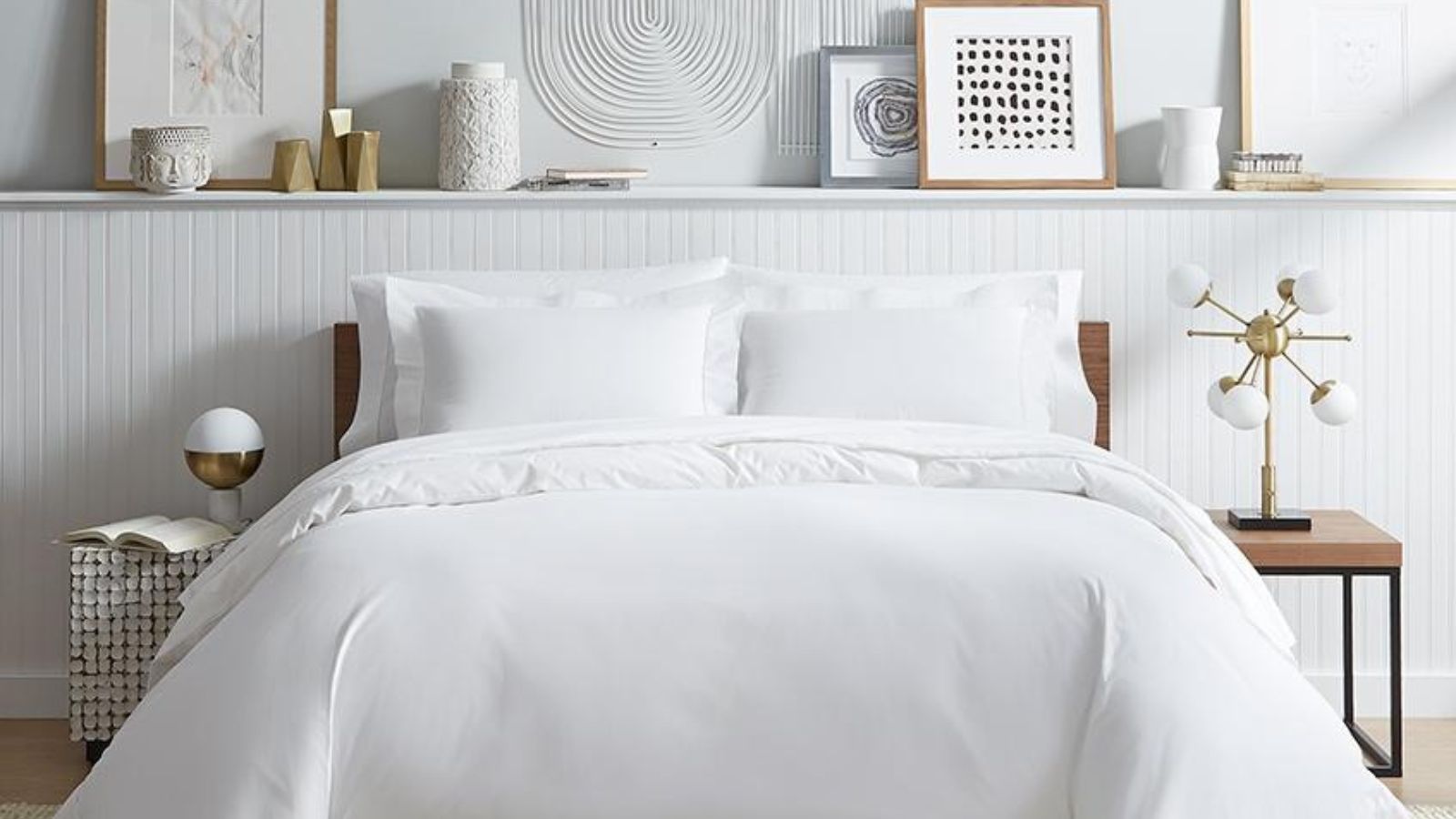
As the resident Sleep Editor, I'm often asked how we test comforters: how I choose which products to call in for review; who does the testing; and exactly what we're looking for. Here's how we test at Homes & Gardens.
First, I browse all the best bedding, including that from Brooklinen, Woolroom, and Boll & Branch, to choose the comforters I want to test. Then, I match each comforter to a member of my expert testing team. Together, we represent a wide range of ages and sleep styles and we live right across the country, in all sorts of climates. I'll send cooling comforters to hot sleepers, warming comforters to cold sleepers, and so on.
We assess each comforter against the same criteria: look and feel; cooling; and ease of care. We also consider the practicalities of buying a comforter, from the range of weights and sizes available to the details of delivery and the care instructions, as well as the all-important price. A comforter must score highly across the board or excel in certain areas to rank in our best duvet inserts buying guide.
How we test comforters – our expert review process explained
Our experts sleep under comforters for eight hours a night, seven nights a week, for a minimum of 30 nights before we publish our initial reviews. This amounts to hundreds of hours of testing in real home environments to give you an accurate indication of long-term performance.
Look and feel

Once we've made the bed, we consider the look and feel of the comforter. We're interested in the fill inside the insert as well as the fabric shell.
Some of the best places to buy comforters offer multiple warmth levels: typically, some variation on Lightweight, All-Season, and Ultra-Warm. We want to gauge the weight of the comforter on our body: whether it feels light and airy or warm and fluffy.
Running our hands over the fabric shell, we're feeling for snags from feather filaments or clumps of fiberfill. Some comforters are wrapped in cotton percale, which feels cool and crisp, where others are wrapped in cotton sateen, which feels smooth and silky.
When you buy bedding bundles that include duvet covers alongside flat and fitted sheets, you might find fabric shells made from linen, bamboo, eucalyptus, or any number of materials. Our job is to describe the look and feel of the fabric shell so that you get the fullest possible picture of what it might look like to use this product.
We're also interested in the construction of the comforter: the quality of stitching at the seams and the choice of baffle-box versus box-stitch designs to keep the fill in place. The best comforters feature evenly distributed fill, so there are no lumps, bumps or cold patches.
Cooling
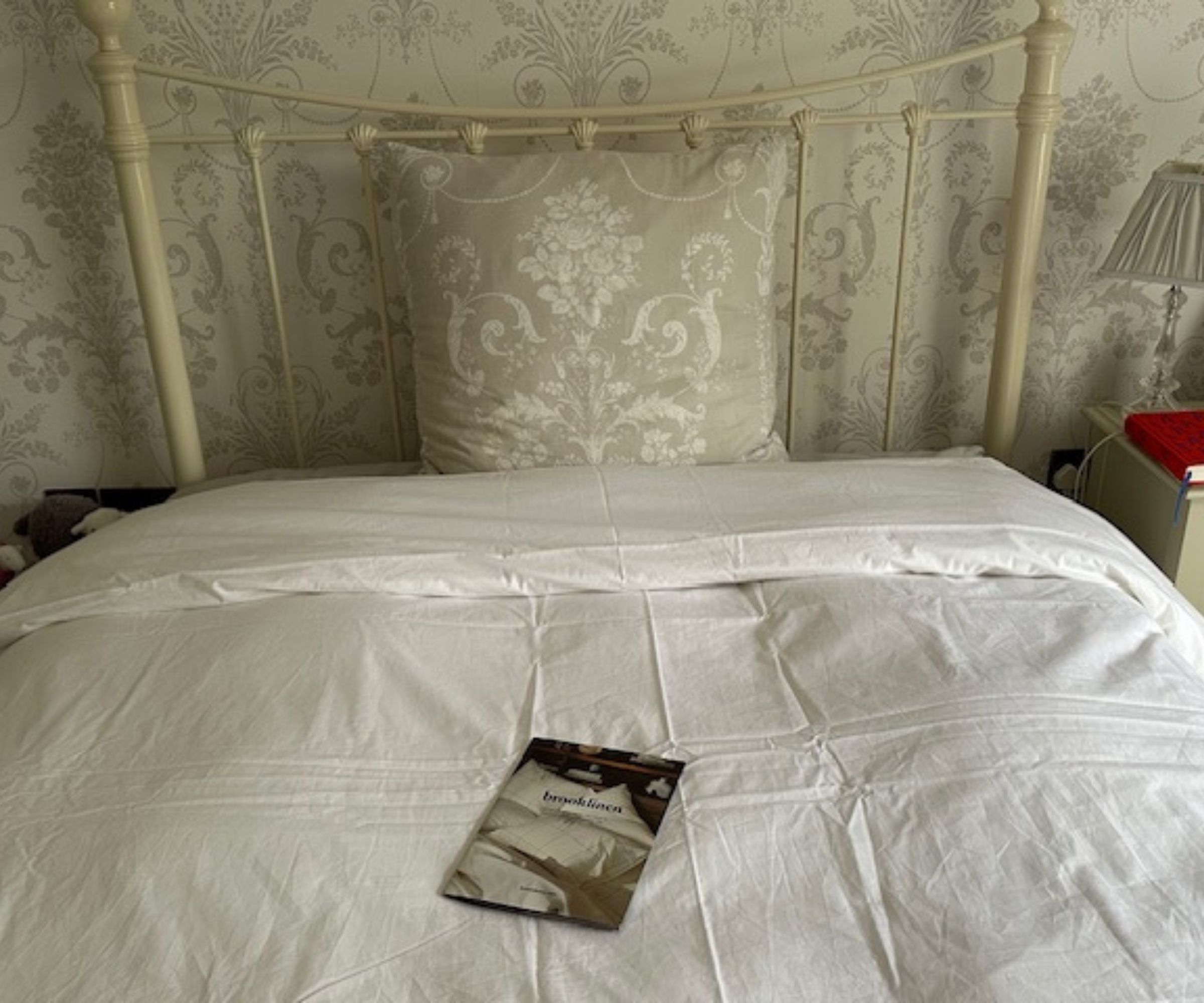
Whether you suffer from night sweats or hot flashes, or you live in a warm climate, or you're shopping for a summer bedspread, you should consider investing in a cooling comforter, to pair with one of the best cooling mattress toppers and pads.
Conversely, if you live in a cold climate or you want to cuddle up under a winter duvet, I suggest you shop for the best warm comforter.
To assess the thermoregulation of a duvet insert, we switch off our HVAC systems to sleep through all weathers, from heatwaves to cold snaps, noting down any nights we wake up in a sweat.
Both the fill type and the fabric case impact the thermoregulation of a comforter. Down is designed to retain heat to keep birds warm, so it's no surprise that a down duvet insert gets a little stuffy in the summer. Down alternative is a catch-all term, encompassing everything from moisture-wicking wool to heat-trapping microfiber: how hot or cold your comforter feels will depend on the specific type of down alternative. As a general rule, natural fibers are more breathable than synthetic materials, so I recommend cotton, linen, bamboo, or eucalyptus cases for hot sleepers.

'Take it from a Texan − the LaCrosse Premium Down Light Warmth Comforter is ideal for warm climates and hot sleepers,' says expert tester Alex Temblador. 'I was highly impressed by the lightweight feel of this comforter: it didn't trap heat or make me sweat, even at the height of summer in a 100-year-old house.'
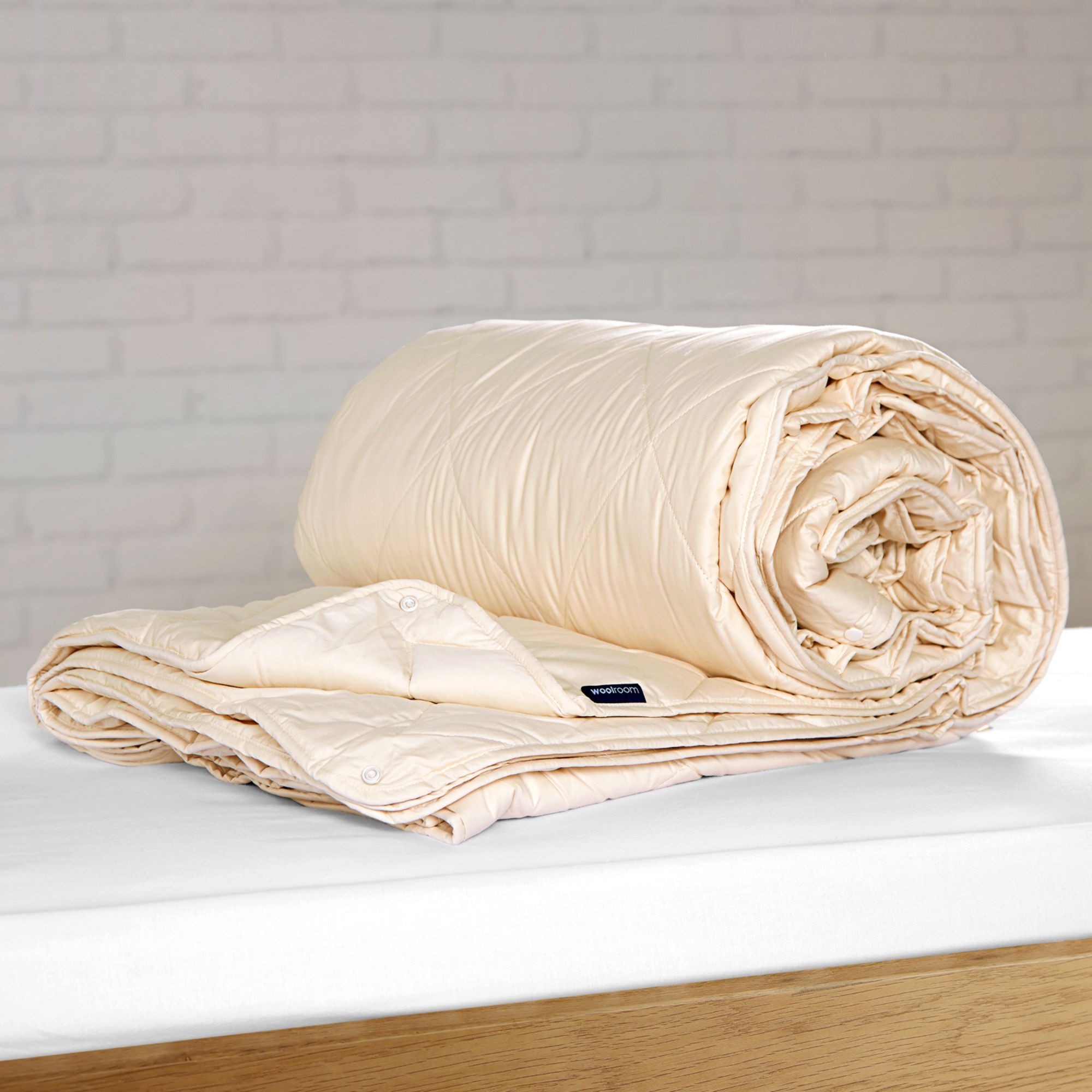
Wool is a natural moisture-wicker. According to the Woolroom Clean Sleep Report 2024, wool can hold up to a third of its weight in water (or sweat) to keep your bed and your body cool and dry. I first sampled this Woolroom comforter in February 2024, then again summer, and for a few nights in the new year: it works well in all seasons.
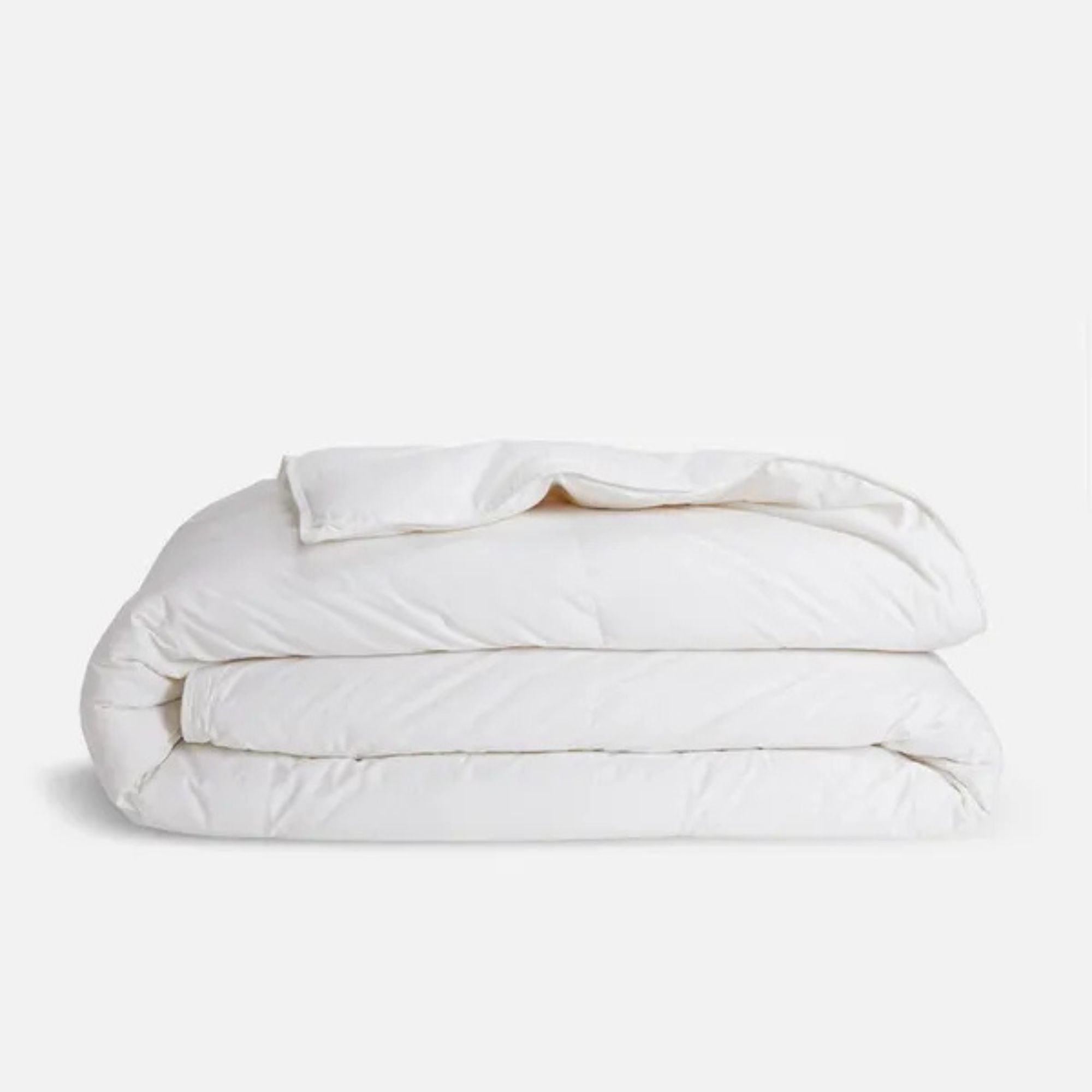
This down comforter looks deceptively light: it's filled to the brim with clusters of Canadian duck and goose feathers to retain heat and wrapped in cotton sateen to soothe your skin. Baffle box construction holds the fill evenly in place, so you shouldn't find any cold patches.
Ease of care

We strip the bed and clean the comforter according to its care instructions before making up the bed again. We're assessing washability: how easy the comforter is to wash and dry and whether the look and feel changes after a quick spin in the washing machine.
If we're working with a duvet insert, rather than a duvet comforter, then we want to know easy it is to attach the duvet case. We experiment with corner loops and duvet tabs, documenting how long it takes to strip and remake the bed.
Practical points
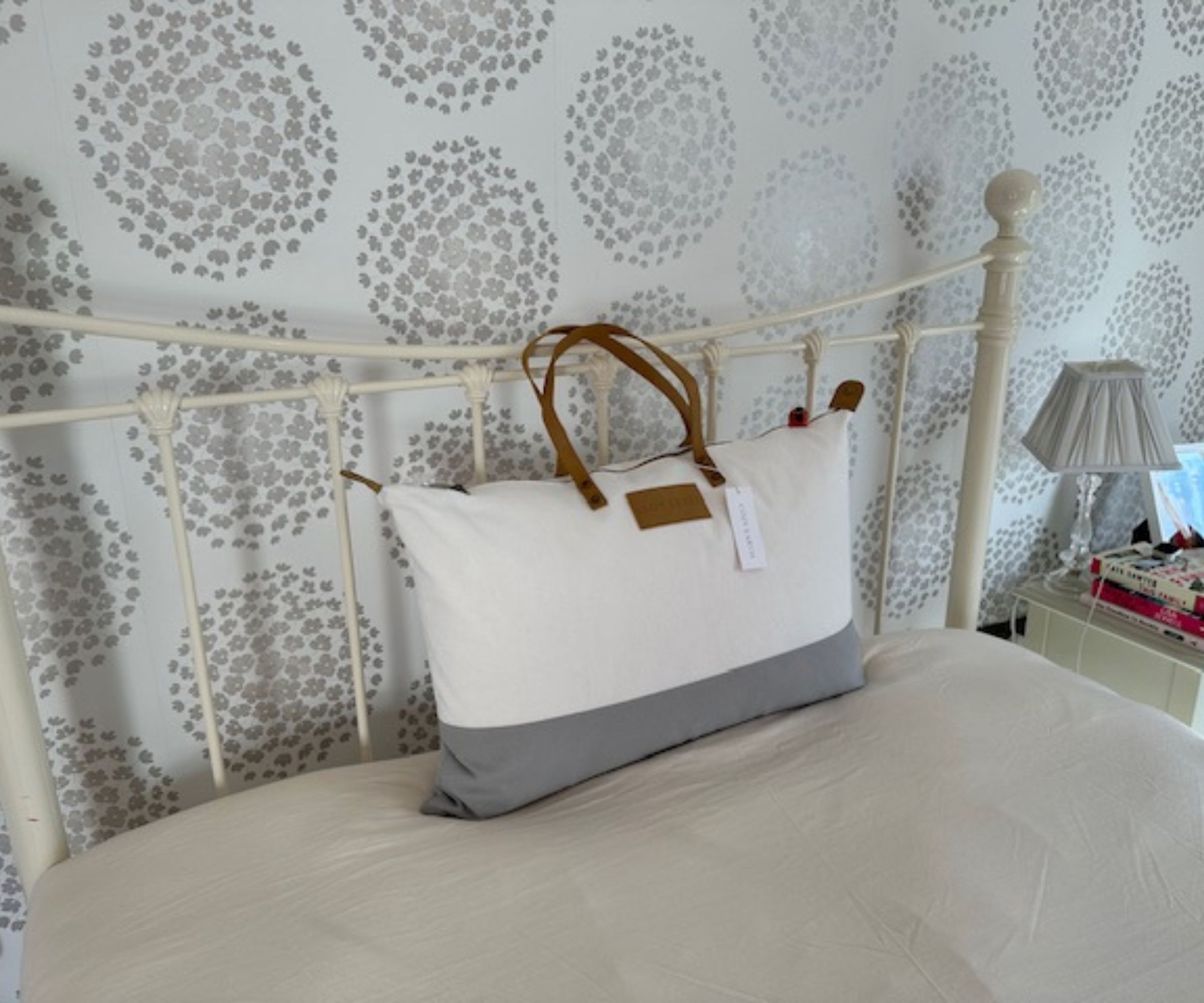
Beneath the product listing, we're looking for badges from trusted third parties to certify the quality of materials and manufacture. For a down comforter, that might be the Responsible Down Standard (RDS), which ensures humane treatment of animals and workers from farm to factory. For a down alternative comforter, it might be the Global Organic Textiles Standard (GOTS) to certify the materials in the fabric case.
We're also interested in the noise levels of a comforter. If you've ever slept with a cheap bedding set, you know what I'm talking about: the rustling sound of the duvet fill slipping around inside the insert. The best comforters are silent when they move.
We consider the practical aspects of shopping for bedding, including the range of colors and sizes available.
Finally, we consider the performance of the comforter against its price to help you determine value for money. I suggest you set a minimum and maximum spend before you start shopping. Personally, I wouldn't spend less than $100 on a Queen-sized comforter. Much lower, and you're likely working with cheap, synthetic materials that will trap heat and sweat. It's worth noting that thicker, winter-weight comforters are often more expensive than summer inserts, because they have a higher fill power.
Only you know what kind of comforter you need: lightweight and airy or warm and fluffy. Before you buy, stop to consider your sleep needs and make sure you're getting value for money.
Then, you'll need to learn how to wash, dry, and care for your comforters and duvet inserts to keep them soft and fluffy.
Design expertise in your inbox – from inspiring decorating ideas and beautiful celebrity homes to practical gardening advice and shopping round-ups.

Emilia is our resident sleep writer. She spends her days tracking down the lowest prices on the best mattresses and bedding and spends her nights testing them out from the comfort of her own home. Emilia leads a team of testers across America to find the best mattress for every sleep style, body type, and budget.
Emilia's quest to learn how to sleep better takes her all around the world, from the 3Z mattress factory in Glendale, Arizona to the Hästens headquarters in Köping, Sweden. She's interviewed luxury bedding designers at Shleep and Pure Parima, as well as the Design Manager at IKEA. Before she joined Homes & Gardens, Emilia studied English at the University of Oxford.